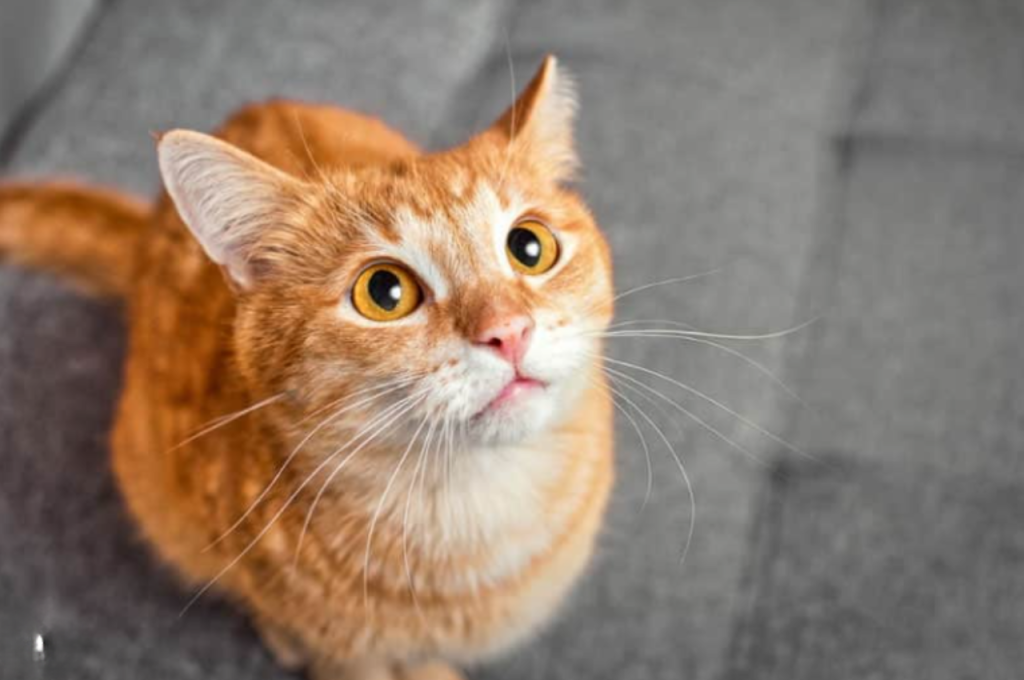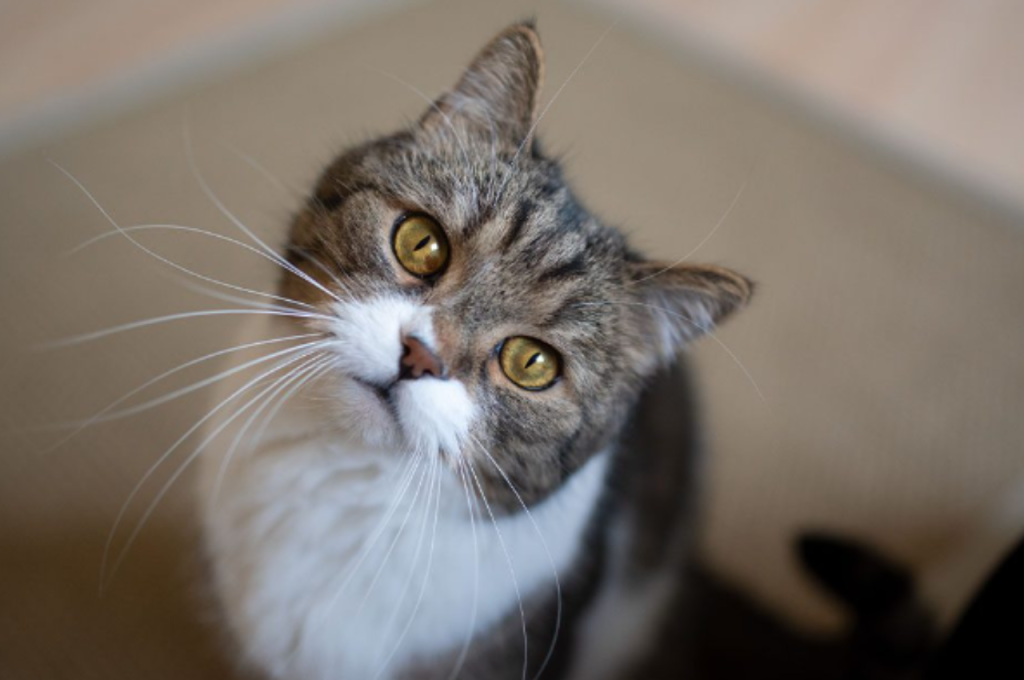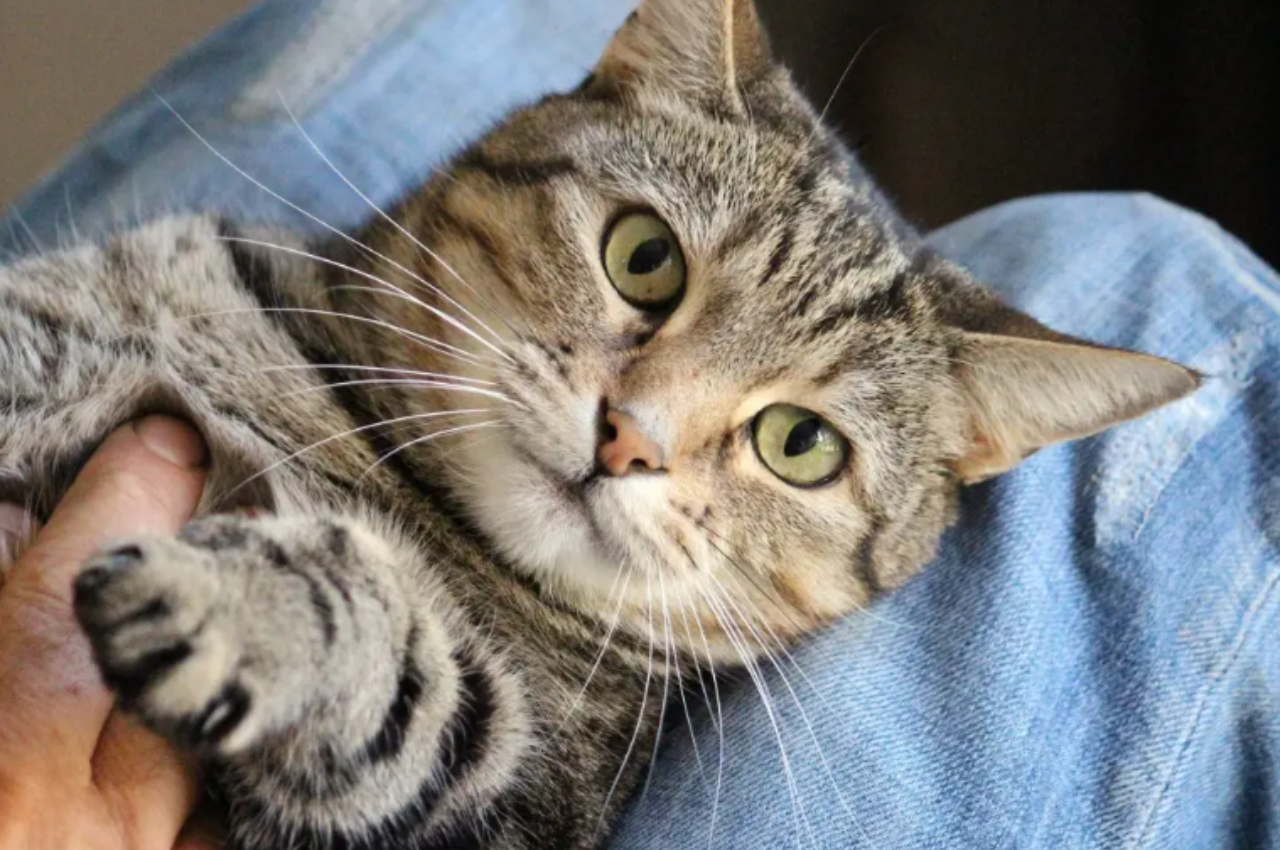Cats do not think we’re cats. However, they may see us as part of their social group.
Cats have long captivated humans with their mysterious and enigmatic nature. As we observe their behaviors and interactions with us, a common question arises, do cats think we’re cats? While it may be tempting to imagine that our feline companions perceive us as fellow felines, research suggests otherwise.
Despite sharing our homes and forming close bonds with us, cats do not perceive humans as their kind. Instead, they view us as an extension of their social group. This understanding goes back to cats’ ancestors, who were solitary hunters and lived predominantly solitary lives. Although cats have adapted to domestication, their cognitive processes and social behaviors still align more closely with their ancestral instincts. So while we may not be seen as cats, our cats do recognize and value our presence in their lives.
Unveiling the Feline Mind
Cats have long been mysterious creatures, captivating us with their enigmatic behaviors and seemingly independent nature. One question that often arises among cat owners and enthusiasts is whether cats perceive humans as fellow felines or as something entirely different. Let’s delve into the fascinating world of feline cognition to explore this intriguing question.

Human Perception of Cats
Humans often project their behaviors and emotions onto cats, assuming they understand us on a human level. Understanding and respecting cats’ natural behaviors and instincts are essential for fostering a harmonious relationship between humans and their feline companions.
Cats’ Perception of Humans
Cats view humans as fellow cats and may exhibit behaviors that reflect this perception, such as bringing ‘gifts’.
Behavioral Studies
Exploring behavioral studies on whether cats perceive humans as fellow felines unveils fascinating insights into interspecies interactions. As cats display behaviors resembling those of other cats, the question of how they truly view us remains a captivating area of research.
Behavioral studies offer valuable insights into the fascinating world of feline cognition. By observing and analyzing the behavior of cats, researchers have sought to understand their thought processes and interactions with humans. Among the various areas of investigation, including human-cat interaction and cats’ responses to human behavior, we can gain a deeper understanding of the complex dynamics between humans and their feline companions.
Human-cat Interaction Observations
When it comes to observing human-cat interactions, researchers have identified interesting patterns that suggest cats perceive humans differently than they perceive other cats. For instance, cats often use different vocalizations and body language when interacting with humans compared to interactions with fellow felines. This indicates that cats have a unique understanding of human behavior and tailor their communication strategies accordingly.
Moreover, behavioral studies have shown that cats exhibit distinct behaviors when in the presence of both humans and other cats, suggesting they recognize the differences between the two. Cats may display more affectionate behaviors, such as purring or rubbing against their human counterparts, while engaging in more territorial or dominant behaviors when interacting with other cats.
Cats’ Response to Human Behavior
Cats are highly perceptive creatures and often respond to human behavior in intriguing ways. Research suggests that cats can interpret human cues and gestures, such as pointing or eye contact. This indicates that cats possess a certain level of social cognition, allowing them to understand and respond to human communication signals. It’s fascinating to consider that cats may have developed this ability over time to adapt to their human environment.
Furthermore, cats have been observed to exhibit behaviors that mimic those typically displayed by kittens towards their mothers. For example, kneading or “making biscuits” on humans may be an instinctual response reminiscent of their behavior towards their mother’s mammary glands during nursing. This behavior suggests that cats may view their humans as nurturing figures or surrogate mothers, reinforcing the idea that cats have a unique understanding of their relationship with humans.
Communication Cues
Understanding the communication cues of our feline friends is essential in unraveling the mystery of whether cats think we’re cats or not. Cats may not communicate in the same way as humans do, but they have their language that they use to express themselves. Let’s delve into the intricacies of feline communication cues and explore signs of affection towards humans.
Understanding Feline Body Language
Cats’ body language can tell us a lot about how they perceive and interact with us. By observing their posture, tail movement, and eye contact, we can decipher their intentions and emotions. A flicking tail may indicate agitation, while a relaxed posture and slow blinking can signify contentment and trust. Understanding these cues can help us build stronger bonds with our feline companions.
Signs of Affection Towards Humans
Contrary to popular belief, feline affection towards humans can be subtle yet profound. From gentle head-butting, known as “head bunting,” to kneading or “making biscuits,” cats have unique ways of displaying their love. Purring, a soothing and rhythmic sound, is another unmistakable sign of feline adoration. By recognizing and reciprocating these signs of affection, we can foster healthy and nurturing relationships with our beloved pets.
Cognitive Abilities
Cats are unique creatures with complex cognitive abilities that often leave us pondering about their thoughts and perceptions. Understanding the Cognitive Abilities of cats provides valuable insight into their behavior and interactions with humans. One particularly intriguing question is whether cats perceive us as fellow felines. Let’s delve into their Cognitive Abilities and explore their Memory and Recognition Skills, as well as their Problem-Solving Capabilities.

Memory and Recognition Skills
Cats possess remarkable memory and recognition skills. They can remember familiar faces and places, indicating the depth of their Memory and Recognition Skills. Additionally, cats can recognize and differentiate between various scents, reflecting their keen sense of smell. These Cognitive Abilities contribute to their ability to form lasting bonds with humans and other animals, enhancing their social interactions and relationships.
Problem-solving Capabilities
Cats demonstrate impressive problem-solving capabilities, often showcased in their hunting and play behaviors. Their agility and creativity in solving puzzles and navigating obstacles underscore their advanced Problem-Solving Capabilities. This cognitive prowess enables them to adapt to different environments and challenges, ultimately enhancing their survival instincts.
Emotional Intelligence
When it comes to understanding the complex workings of a cat’s mind, one can’t help but wonder about their emotional intelligence. Do cats perceive us as fellow felines or something else entirely? Exploring this fascinating topic offers us intriguing insights into how cats relate to humans on an emotional level.
Empathy Towards Humans
While cats may not think we’re exactly like them, they do possess a remarkable ability to exhibit empathy towards their human counterparts. Studies have revealed that cats can sense human emotions through subtle cues like body language and facial expressions. This innate ability allows them to respond to our emotional needs, acting as loyal companions who provide comfort and support during times of distress. So, even though cats may not perceive us as cats, they certainly understand us on a compassionate level.
Stress and Anxiety Responses
Similar to humans, cats can experience stress and anxiety. However, their response to these emotions may differ from ours. Cats have unique behaviors, such as hiding or seeking solitude when they feel overwhelmed. Cat owners need to recognize these signs and create a calming environment for their feline friends. This could involve providing safe spaces, interactive toys, or engaging in play sessions to prevent stress and anxiety from taking a toll on their well-being.
In addition to their stress responses, cats can also pick up on their owner’s emotions. If a person is feeling anxious or upset, a cat may react by seeking physical closeness or offering gentle purrs as a form of emotional comfort. This highlights their ability to not only recognize human emotions but also respond to them in their unique way.
Understanding a cat’s emotional intelligence provides valuable insights into our beloved feline companions. While they may not perceive us as fellow cats, they have the remarkable capability to empathize with us and respond to our emotional needs. By nurturing this emotional bond between humans and cats, we can ensure a harmonious and fulfilling relationship.
Social Dynamics
Understanding the social dynamics of cats sheds light on how they interact with humans and other animals. While cats are often seen as solitary creatures, they do exhibit complex social behaviors and form relationships within their social groups. Here, we explore the social dynamics of cats and how they impact their interactions with humans and other pets.
Hierarchical Structures in Cats
Cats establish hierarchies based on dominance and territorial behaviors. Understanding the social structure of cats can help improve their well-being.
Bonding Patterns With Humans
Cats form strong bonds with humans through affection and interaction. Building a bond with a cat involves trust, consistency, and positive reinforcement.
Instinctual Behaviors
Instinctual behaviors play a significant role in understanding the complexities of a cat’s mindset. These behaviors, deeply rooted in their nature, influence how cats perceive and interact with humans.
Hunting Instincts vs. Domestication
Cats’ innate hunting instincts have been honed over thousands of years. Despite domestication, these natural hunting tendencies persist within their DNA. When cats engage in stalking, pouncing, and playing with their prey, they are exhibiting behaviors inherited from their wild ancestors. This primal instinct remains deeply embedded in their behavior, even when living as cherished pets in human households.
Territorial Behavior Towards Humans
Cats are renowned for their territorial nature, a trait that extends to their interactions with humans. While they may see us as providers of food and shelter, they also see us as intruders in their territory. This can be observed through behaviors like rubbing against our legs or marking us with their scent, an instinctual method of asserting ownership and creating a familiar environment.
The Human-cat Relationship
Cats have long been our companions, offering us comfort and companionship in exchange for a warm home and a steady supply of food. Let’s explore the intriguing dynamics of the human-cat relationship and uncover the factors that influence the bond between our feline friends and us.

Factors Influencing the Bond
The bond between humans and cats is shaped by a multitude of factors that contribute to a harmonious and trusting relationship. Understanding these factors can help us build a stronger connection with our furry companions.
Mutual Understanding and Communication
Effective communication is the key to any successful relationship, and this holds for the human-cat bond as well. Although cats cannot speak our language, they have their unique way of communicating with us. Understanding their subtle cues and body language is crucial in building mutual comprehension and trust.
When interacting with your cat, pay attention to their tail movements, ear positions, and vocalizations. A gently swaying tail indicates relaxation, whereas a flicking tail may signify agitation. Similarly, flat ears could be a sign of fear or aggression. By observing and responding to these signals, you can foster a deeper understanding with your feline friend.
Moreover, communication is a two-way street. Cats are highly perceptive to human emotions, and they often mirror our moods. By maintaining a calm and soothing demeanor, you can create a positive and stress-free environment for your cat.
While vocalizations are a prominent form of communication for cats, they also rely on scent and touch to express their feelings. By providing them with comfortable scratching posts and toys, you can encourage healthy interaction and satisfy their instincts.
Creating an environment that supports open and clear communication is essential in strengthening the bond between humans and cats. By understanding and respecting their needs, we can establish a relationship built on love and trust.
Conclusion
While it’s impossible to know for certain what cats truly think, there are fascinating similarities and differences between human and feline behavior. From their social interactions to their hunting instincts, cats have a unique perspective of the world. However, regardless of whether cats view us as fellow felines or not, our bond with them remains strong and mutually beneficial.
So let’s continue to cherish and care for our furry companions, with the understanding that their thoughts and perceptions will forever remain a delightful mystery.
